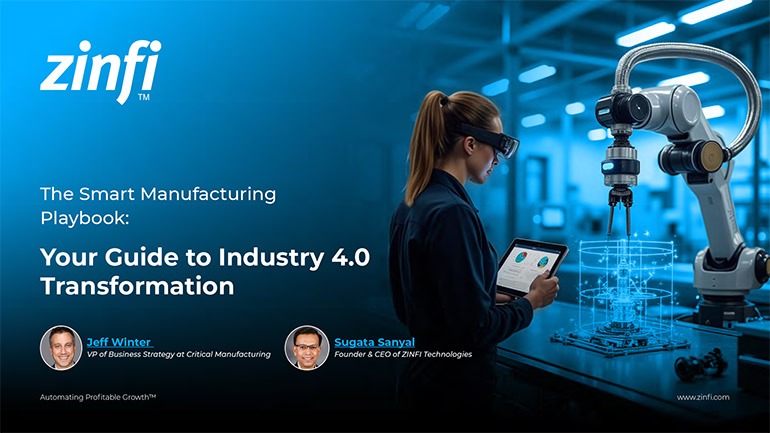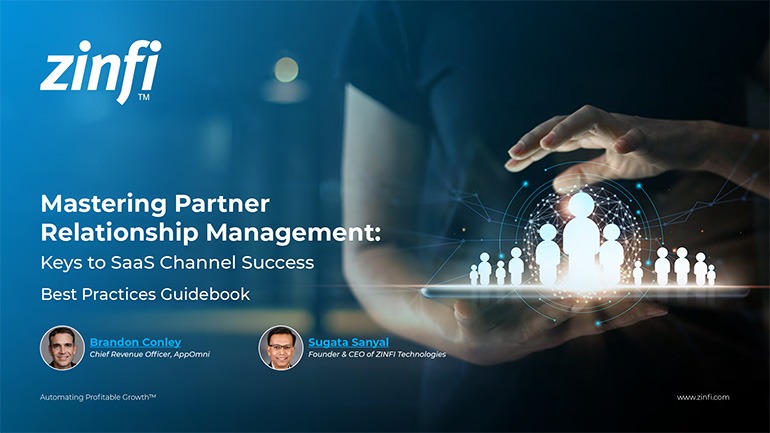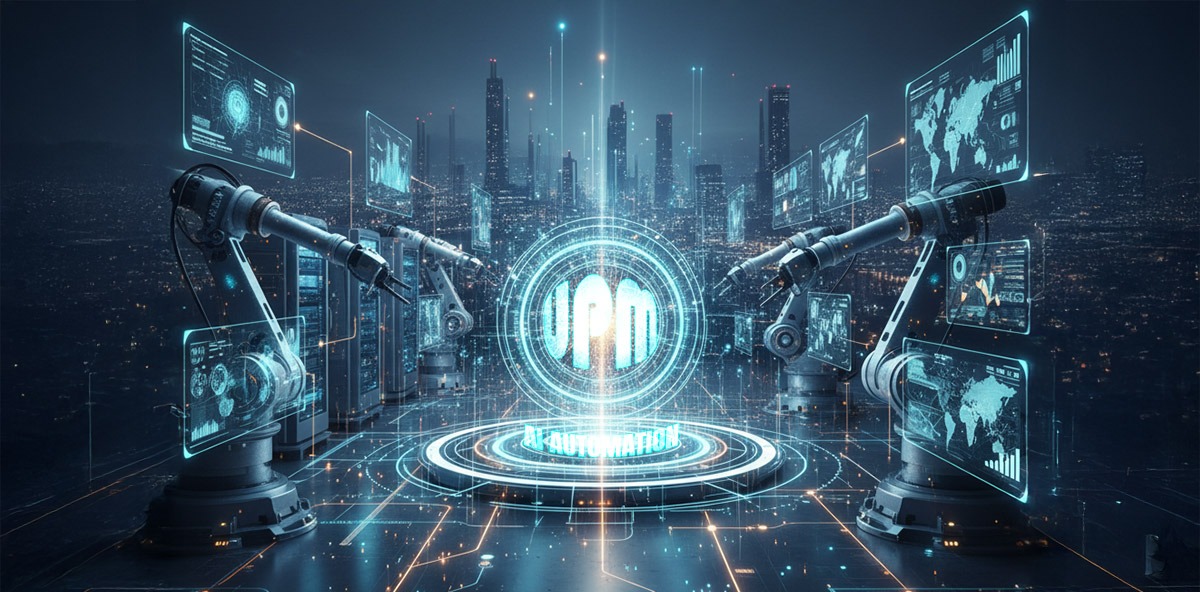
Bridging Human Intelligence with AI and the Future of Work
Hosted by ZINFI CEO and Founder Sugata Sanyal, this series features distinguished speaker Dr. Senjuti Basu Roy, who explores how AI is transforming the future of work by automating tasks and enhancing human creativity. She highlights AI’s evolution, particularly the rise of generative AI and its applications in healthcare and finance. She also addresses key ethical challenges, such as job displacement and biases in decision-making. Dr. Basu Roy introduces the Centaur and Cyborg models, demonstrating how AI and humans can collaborate effectively. The discussion concludes with a call for responsible AI adoption, ensuring that AI complements human skills while minimizing risks in the future of work.
Video Podcast: Bridging Human Intelligence with AI and the Future of Work
In this chapter, Dr. Senjuti Basu Roy introduces the transformative role of AI in shaping the future of work. She highlights how the COVID-19 pandemic accelerated workplace changes, prompting role shifts and increasing reliance on AI. The intersection of AI and future of work is evident in the U.S. labor market, where automation reshapes jobs across industries. By 2030, 30% of current work hours are expected to be automated, leading to significant shifts in occupational structures. Dr. Basu Roy emphasizes that this trend disproportionately affects women, who are 1.5 times more likely to transition into new roles than men due to automation. As AI advances, employers must adopt more expansive hiring strategies and focus on workforce development to ensure workers can adapt to AI-driven roles. Dr. Basu Roy raises the following question: Is AI a disruptive force that benefits or harms the workforce? This chapter introduces the complex relationship between AI and the future of work, setting the stage for a discussion on the opportunities and challenges AI presents in shaping the workforce of tomorrow.
Dr. Basu Roy offers a historical overview of AI’s development, connecting it to its role in shaping the future of work. Beginning with John McCarthy’s coined “artificial intelligence” in 1955, AI has undergone cycles of innovation and setbacks. Despite periods of disillusionment, known as “AI winters,” the field has consistently evolved. A significant turning point came in 2012 with deep learning, which significantly advanced AI’s natural language processing and image recognition capabilities. These advancements laid the foundation for today’s generative AI tools, such as ChatGPT, which have become central to discussions about the future of work. Dr. Basu Roy explains how AI’s ability to perform tasks like content creation, data analysis, and project management is transforming industries and creating new workflows. Notably, she notes that AI’s recent success is not due to new theoretical breakthroughs but rather the massive increase in computing power and availability of large datasets. Integrating AI into workplaces marks a new era for the future of work, where AI-driven automation is expected to change how businesses operate and how employees perform tasks, creating challenges and opportunities for the global workforce.
AI-driven automation is at the forefront of transforming the future of work, allowing businesses to streamline processes, reduce costs, and enhance productivity. Dr. Basu Roy discusses how AI automates routine tasks across industries, enabling workers to shift their focus to more strategic, value-driven activities. In sectors such as manufacturing, AI-powered robotics, and machine learning systems are enhancing production efficiency, quality control, and predictive maintenance. Similarly, in finance, AI-driven tools automate processes like data entry and form validation, reducing human error and increasing accuracy. In customer service, AI chatbots and virtual assistants take over routine inquiries, offering 24/7 support while allowing human agents to focus on complex problem-solving. AI’s role in administrative functions is also highlighted, with tools automating tasks like scheduling, email management, and report generation. Dr. Basu Roy emphasizes that these shifts are part of a broader trend where AI and the future of work dynamics are leading to more efficient and innovative workplaces. Beyond automation, AI enables advanced data analytics, helping businesses uncover insights from vast datasets that would be difficult to analyze manually. As AI takes on more operational tasks, employees can dedicate their time to creative problem-solving, strategic planning, and fostering innovation—critical components in shaping the future of work.
Generative AI is rapidly becoming a cornerstone of innovation in the workplace, driving creativity and productivity in the future of work. Dr. Basu Roy explains how Generative Adversarial Networks (GANs) enable machines to produce highly realistic synthetic data, from text to images, transforming how businesses operate in creative industries. Tools like Canva, DALL-E, and MidJourney democratize design by allowing users to generate professional-grade visuals without extensive artistic backgrounds. AI’s influence extends beyond design; it is also revolutionizing customer service. In a recent study, AI-augmented customer service agents were able to resolve issues 14% faster, with novice agents improving their performance by 35%. Dr. Basu Roy highlights that the ability of generative AI to assist with creative tasks like writing, coding, and project management is driving significant productivity gains across industries. The fusion of AI and the future of work trends empowers employees to focus on high-level decision-making while AI handles repetitive and time-consuming tasks. As AI continues to evolve, its role in creativity and innovation will redefine how employees collaborate, problem-solve, and engage in knowledge work, contributing to a more dynamic and adaptable future workforce.
As AI becomes increasingly integrated into the workforce, ethical considerations surrounding its deployment are paramount. Dr. Basu Roy discusses AI’s potential risks, particularly in job displacement and bias. The relationship between AI and the future of work dynamics is complex. While AI can enhance efficiency and productivity, it also threatens to displace jobs, especially in sectors involving low-skill, repetitive tasks. Dr. Basu Roy compares previous technological revolutions, such as the Industrial Revolution, where automation displaced certain jobs while creating new opportunities. Today, AI is poised to automate telemarketing, customer service, and even healthcare roles, raising concerns about workforce displacement. Another significant issue is bias in AI algorithms, which can lead to unfair outcomes. Dr. Basu Roy highlights the case of the COMPAS algorithm used in judicial decision-making, which faced criticism for its lack of transparency and potential bias. This example illustrates the broader need for responsible AI development, where fairness, transparency, and accountability are prioritized. She advocates for a cautious approach to integrating AI in the workplace, ensuring it complements human workers and promotes inclusivity rather than exacerbating societal inequities. This chapter underscores the importance of addressing ethical challenges as AI reshapes the future of work.
How well humans and AI collaborate will define the future of work. Dr. Basu Roy introduces two fundamental models that illustrate this relationship: the Centaur and Cyborg models. The Centaur model, inspired by chess-playing machines, involves a division of labor where humans and AI work on distinct but complementary tasks. In this model, AI handles complex computations while humans apply intuition, creativity, and judgment. This collaboration model is already used in industries like defense, where AI-assisted decision support tools help naval operators make complex routing and maintenance decisions. The Cyborg model, on the other hand, involves deeper integration between human and AI capabilities. Here, humans and AI interact continuously, with AI augmenting human cognitive abilities to enhance decision-making and creativity. She gives examples of AI tools that assist writers by generating real-time suggestions, helping them produce better content more efficiently. As AI becomes more integrated into the workplace, these collaboration models will drive innovation and productivity, offering a glimpse into the future of work where human intelligence and AI capabilities are seamlessly blended. The chapter concludes by emphasizing that AI will not replace human workers but instead complement and enhance their abilities in the workplace of tomorrow.















